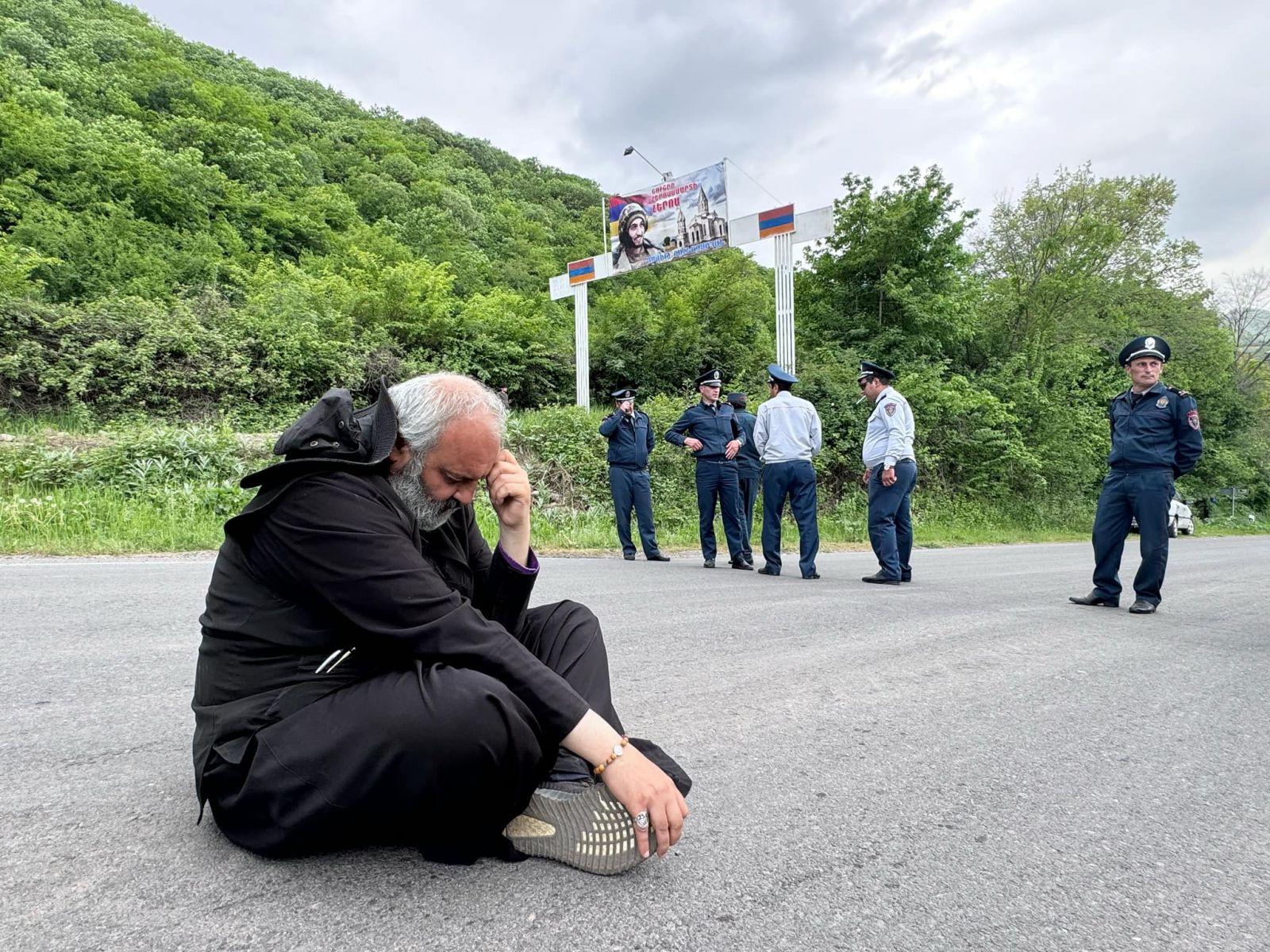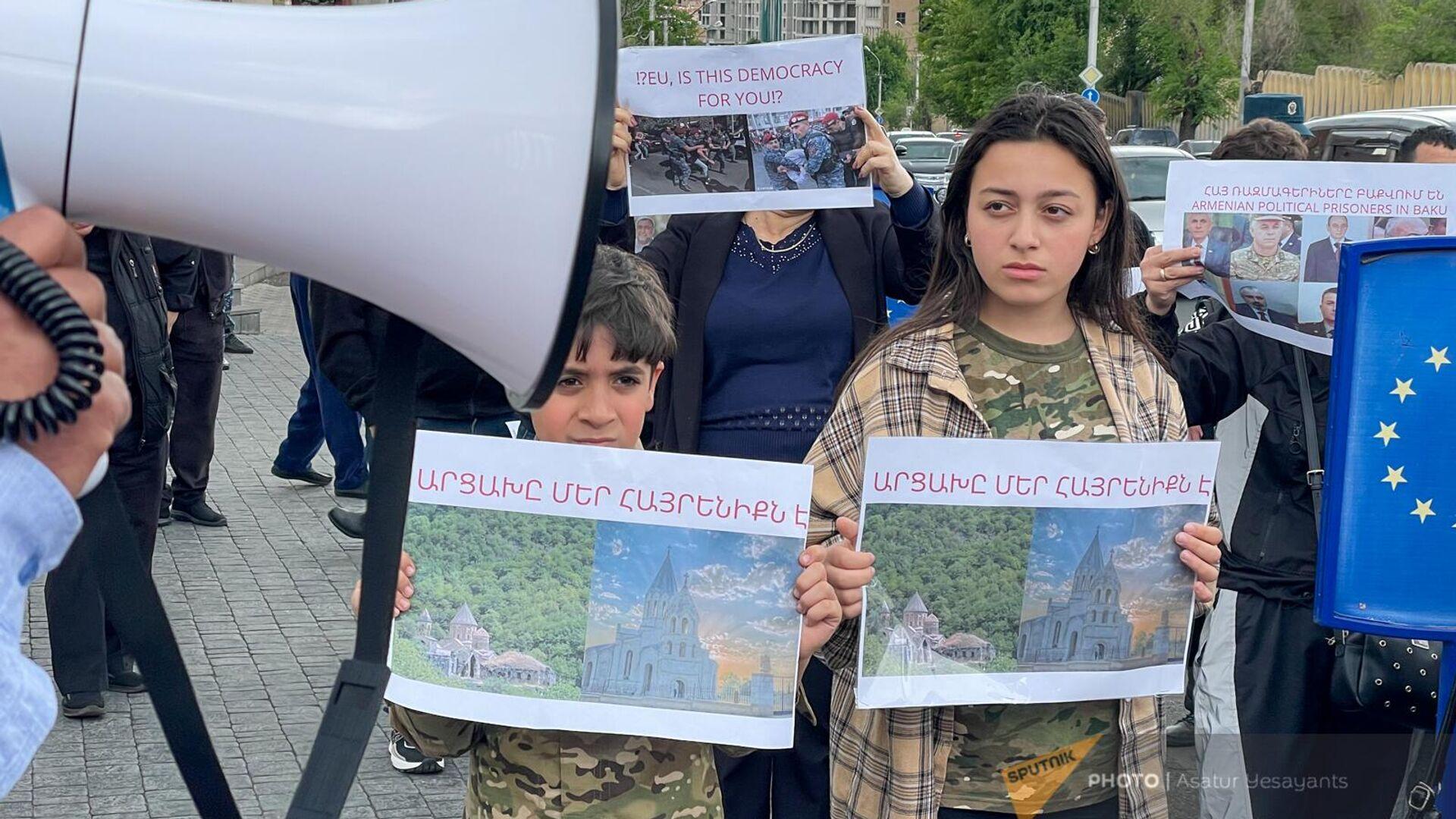Profiling Archbishop Bagrat Galstanyan – Tavush region protest leader
Armenia finds itself trapped in a complex web of diplomatic intricacies and internal political challenges, as revealed through recent unfolding regional developments. The situation has garnered attention due to a convergence of factors, including border demarcation issues, constitutional controversies, and the evolving role of the Armenian Church in political affairs.
Archbishop Bagrat Galstanyan of the Tavush Diocese of the Armenian Apostolic Church has become a central figure amid escalating tensions and protests in Armenia's Tavush region. His involvement in recent protests and outspoken criticism of the Pashinyan government has sparked controversy and debate in the country.

The archbishop's accusations against the Armenian government, particularly regarding police intimidation and suppression of dissent, have drawn attention to his role as a vocal critic of the government’s handling of the issue related to the border villages being handed over to Azerbaijan as they were occupied in the early 1990s when the separatism in Armenia was fomented by those who are in opposition now.
Archbishop Bagrat Galstanyan’s condemnation of the heavy police presence during a planned meeting with Kirants residents underscores his perception of the government interference and abuse of power as well as the church’s stance on a search for peace with Azerbaijan.
Collaborating with political figures like Garnik Danielyan from the Armenia faction of Robert Kocharyan, former Armenian president, Archbishop Galstanyan has aligned himself with radical opposition forces, contributing to the politicization of his religious position. This alliance has fueled accusations of partisanship and further blurred the lines between church and state in Armenia's political landscape.
Critics argue that Archbishop Galstanyan's engagement in secular political matters, including leading protests and advocating for specific demands, raises questions about the appropriate role of religious leaders in governance. His active role in public demonstrations and calls for nationwide mobilization has been met with skepticism and criticism from those who advocate for a strict separation between church and state.
Moreover, the archbishop's defiance of government directives and his readiness to escalate protests from Tavush to Yerevan have exacerbated tensions within Armenian society. His leadership style, characterized by confrontational rhetoric and mobilization tactics, has polarized public opinion and intensified divisions between supporters and detractors.
Amidst allegations of state repression, Archbishop Galstanyan's portrayal as a resistance figure has been met with mixed reactions. While some view him as a symbol of defiance against perceived injustices, others criticize his politicization of religious authority and his alignment with opposition factions.
Armenia's complex diplomatic & political landscape
The ongoing border delimitation-related issues and the gradual emergence of the protest movement in Armenia are being aggravated by various statements and differing interpretations of historical and legal frameworks.
Armenian analysts point to Azerbaijan's stance, which allegedly roots its alleged territorial claims in the heritage of the Democratic Republic of Azerbaijan of the 1920s rather than the Soviet-era context. This interpretation, Armenian pundits claim, allows Azerbaijan to assert its constitutional autonomy in border delineation matters, potentially complicating negotiations based on the 1991 Almaty Declaration.

Moreover, internal political dynamics within Armenia present intriguing challenges. The candidacy of Archbishop Bagrat Galstanyan, a controversial religious figure in the Tavush protests, underscores legal complexities within Armenia's constitutional framework.
The pro-opposition Hraparak daily sheds light on constitutional hurdles facing Archbishop Galstanyan, highlighting his dual citizenship (Armenian and Canadian) as a significant impediment to seeking political office due to residency requirements. Despite leading protests in Tavush, Archbishop Galstanyan's eligibility for political office remains constrained by legal statutes, illustrating the tensions between religious leadership and formal governance structures. The opposition's narrative underscores a broader debate regarding the separation of church and state, echoing concerns over the politicization of religious figures amid Armenia's evolving democratic landscape.
Additionally, the Armenian government's response to dissent has raised questions about the legitimacy of state authority. Reports of police crackdowns on protesters and allegations of government-sponsored propaganda campaigns against religious leaders like Archbishop Galstanyan reflect a deteriorating trust in governmental institutions. The intensification of these tactics risks further undermining public confidence and threatens to escalate unrest.
Furthermore, the potential for escalation poses a critical juncture for Armenia's leadership. The opposition warns of the repercussions of a government crackdown, suggesting that any use of force against protesters, particularly against religious leaders like Archbishop Galstanyan, could erode the remaining legitimacy of Prime Minister Pashinyan's administration. The prospect of escalating tensions reverberates beyond Armenia's borders, potentially straining diplomatic relations with the Armenian diaspora and global Church affiliates.

The recent detention of protesters in Kirants village, coupled with nationwide rallies in solidarity with Tavush residents, underscores the depth of societal discontent. The media reporting on widespread demonstrations reflects mounting public pressure on the government to address grievances and chart a path toward resolution.
In conclusion, Armenia stands at a crossroads defined by diplomatic negotiations, constitutional constraints, and societal mobilization. The evolving narrative encapsulates broader themes of identity, governance, and the intersection of faith and politics. The outcome of these dynamics will undoubtedly shape Armenia's trajectory, with implications extending far beyond its borders.








